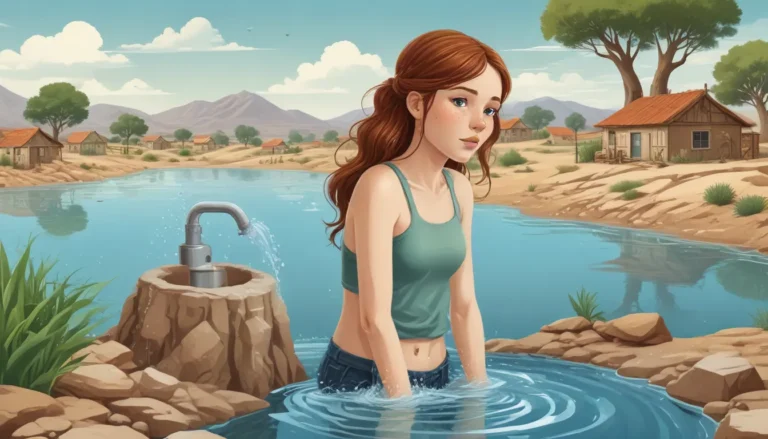A Note About Images: The images used in our articles are for illustration purposes only and may not exactly match the content. They are meant to engage readers, but the text should be relied upon for accurate information.
Greenbelts are not just pretty landscapes; they provide essential benefits like improving air quality, supporting wildlife, and reducing stress levels, making cities healthier and more enjoyable. Greenbelts offer recreational opportunities, protect wildlife, and preserve cultural heritage, making them vital for the health and well-being of both people and the planet.
Greenbelts: Nature’s Oasis in Urban Landscapes
Greenbelts are carefully planned and protected areas of open space that serve to conserve and enhance natural ecosystems, providing habitat for wildlife and preserving biodiversity. These green spaces act as a breath of fresh air in the midst of bustling urban jungles, promoting environmental sustainability and serving as a sanctuary for nature.
The Environmental Benefits of Greenbelts
Greenbelts play a crucial role in improving air quality by acting as a buffer between urban areas and industrial zones. They help filter pollutants and enhance air quality, making cities healthier and more livable. Moreover, greenbelts regulate climate by absorbing and storing carbon dioxide, mitigating the effects of climate change and preserving the planet for future generations.
Enhancing Quality of Life Through Green Spaces
Studies have shown that spending time in green spaces can have a positive impact on mental well-being. Greenbelts provide peaceful retreats from the hustle and bustle of urban life, reducing stress levels, improving mental clarity, and contributing to overall well-being. Additionally, these green spaces offer recreational activities such as hiking, biking, picnicking, and wildlife watching, providing residents with accessible and enjoyable leisure opportunities.
Preserving Natural Resources and Cultural Heritage
Greenbelts act as natural flood barriers by absorbing rainwater and reducing the risk of flooding in nearby areas. They also promote sustainable agriculture by supporting local food production and preserving traditional farming practices, ensuring a secure food supply for nearby communities. Furthermore, greenbelts protect cultural heritage by containing historical sites, ancient woodland, and areas of cultural significance, preserving the heritage and identity of a region for future generations to appreciate and learn from.
Connecting Communities Through Green Spaces
Greenbelts act as wildlife corridors, connecting fragmented habitats and providing safe passage for wildlife. They allow animals to move between different areas, maintaining genetic diversity and contributing to ecosystem health. Moreover, greenbelts reduce noise pollution by acting as a natural sound barrier, creating a more peaceful and serene living environment for residents.
Supporting Economic Growth and Community Cohesion
Living near a greenbelt has been found to increase property values, as these areas provide a desirable environment and an attractive view for residents. Greenbelt areas can attract tourists and visitors, boosting local businesses such as cafes, restaurants, and eco-tourism operators. Furthermore, greenbelts are often used as gathering spaces for community events, fostering a sense of belonging and providing a common ground for residents to connect with nature and each other.
How to Support Greenbelts
You can support greenbelts by advocating for their preservation and expansion, participating in local conservation efforts, supporting sustainable development initiatives, and enjoying and respecting these valuable natural spaces. By recognizing the importance of greenbelts and working towards their preservation and enhancement, we can ensure a greener, healthier future for ourselves and future generations.
Conclusion
Greenbelts are not just aesthetically pleasing areas of open space; they are essential components of sustainable urban planning. From combatting climate change to preserving biodiversity, greenbelts offer a range of benefits that extend beyond their visual appeal. By understanding and appreciating the significance of greenbelts, we can work towards creating healthier, more vibrant communities that value and protect our natural resources.
FAQs
Q: What is a greenbelt?
A: A greenbelt is an area of open space designated to protect natural and cultural resources and promote sustainable development, usually located around or within an urban area.
Q: What are the benefits of greenbelts?
A: Greenbelts offer improved air and water quality, preservation of wildlife habitats, recreational opportunities, climate change mitigation, and support for local agriculture.
Q: How do greenbelts combat climate change?
A: Greenbelts help combat climate change by absorbing carbon dioxide through photosynthesis, acting as carbon sinks and reducing greenhouse gas emissions.
Q: Are greenbelts only found in urban areas?
A: While commonly associated with urban areas, greenbelts can also exist in rural or suburban regions, serving the same purpose of protecting natural resources and promoting sustainable development.
Q: How can I support greenbelts?
A: You can support greenbelts by advocating for their preservation, participating in local conservation efforts, supporting sustainable development, and enjoying and respecting these valuable natural spaces.
Join us in celebrating the wonders of greenbelts and the invaluable role they play in creating healthier, more sustainable communities for all. Let’s work together to protect and cherish these green spaces for generations to come.






